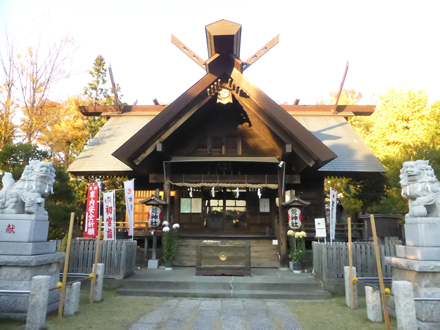Washi-jinja shrine
| Name of facility | Washi-jinja shrine |
| Overview | There is a place that is said to be an ancient coastline to the south of the ward-preserved forest in the precincts. As it was located in a slightly elevated countryside along the river, the shrine was reflected on the surface of the water. That is why people called it Ukishima Myojin-no-Mori or a floating Myojin forest. Shimane village was widely a leading village shrine during the Edo period. It is said to be revived in 1318. The enshrined deities are Yamato Takeru-no-Mikoto, Hondawake-no-Mikoto and Kunitokotachi-no-Mikoto and others. Ooiden protects the main shrine built in the Edo period. The worship hall was rebuilt in 1956 (all main buildings were reroofed by copperplate roofing in 2003). Pairs of lion-like statue of the original worship hall are put on the horizontal timber of the sacred dances and music performed hall to protect festival music and the area. In addition to the large torii gate that was erected manually in 1960, there are the mail shrine of Mitsumine Shrine and its torii gate (Adachi registered tangible cultural property), the remains of Miyamaebashi bridge over Senjubori, moat, guardian dogs, and Yasukuni Peace monument, Fujizuka mount and Shogun stone related to Yoshimune in the precincts. Shimane-Bayashi, music and Jindai-Kagura, sacred dances and music used to dedicate to the shrine were revived by Taguchi Minekichi (1852-1942), and there is also a stone monument in the precincts celebrating the 88th birth of Minekichi. Shimane-Bayashi is performed at local events including the festival of Washi-jinja shrine. Jindai-Kagura has 16 performances and is dedicated by the member of Shimane-Bayashi Preservation Society at the Kagura Hall on the second Saturday and Sunday of September at Washi-jinja shrine Festival and on the day of the Rooster in November. The shrine has its support group. The great portable shrine carved from a zelkova tree like the enshrined deity is the highest quality carvings made by a engraver, Goto Naomitsu. When Miyamoto Unosuke Shoten restored it, he thought that. The parade of the portable shrine along with Shimane-Bayashi performance will be held as well. |
| Address | 4-25-1 Shimane Adachi |
| Access | 1 min. walk from Shimane 2-chome stop of Bus for Hanahata Kuwabukuro Danchi from Nishiarai Station of Tobu Skytree Line 20 min. walk from Takenotsuka Station (East Exit) of Tobu Skytree Line |
| Map | Google map |
| Contact | 03-3883-6140 |
Recommended spots















